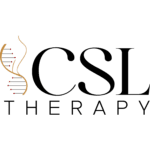How to write a one pager for a CSL Course submission


What is a one pager?
A course one pager is a concise document that provides a brief overview of a course. It typically includes key information such as the course title, objectives, target audience, duration, and a summary of the content. A course one pager serves as a quick reference for potential students, reviewers, or stakeholders to understand the essential details of the course at a glance. It condenses the most important information into a single page, making it convenient for decision-making and evaluation purposes.
Why does CSL ask AST’s to upload a one-pager?
The American Council of Body Altering Aesthetics recognizes the importance of clear and concise information when reviewing course submissions by Advanced Scholastic Trainers (ASTs). Requiring a one pager for all course submissions serves multiple purposes. It allows the council to have a standardized format for assessing and comparing different courses. The one pager provides a snapshot of key details such as course objectives, target audience, and duration, enabling efficient evaluation. Additionally,, the one pager helps ensure transparency and accountability by ensuring that all ASTs adhere to the same submission requirements. It streamlines the review process and ensures that essential information is readily available to the council and other stakeholders, promoting consistency and clarity in evaluating the submitted courses.
What information needs to go on each course one pager?
I’m glad you asked (let’s pretend like you asked). Let’s review the steps for a CSL one pager
One-Pager information
- AST Trainer license number: This number is assigned once your application to become an AST is approved
- Full name: Legal Government name (should match your AST license)
- Email: best email to receive correspondence about your course
- Is your course considered acceptable content? (Y or N) We are only able to review acceptable content. Review the list of acceptable content HERE
- Is this a Foundational or Supplemental course?: Before submitting, select which subsection your course falls in. This makes it easier for students to locate the types of courses they need/want to take + dictates your course submission fees.
- If Foundational, choose one:
- Modalities, Techniques, Manual forces
- Applied Science
- Plastic surgery procedures
- If Supplemental, choose one:
- Professional Communication
- Professionalism & Ethics
- Laws and Business Practices
- If Foundational, choose one:
- What CSL course educational subcategory is this? (Scroll & select one): Every course falls within a category based on skillsets and competencies to be taught. This is a more detailed categorization and classification of your course within he CSL Therapy organization, meant to help students along with the general public navigate specific topics of interest.
For a full list of Educational Subcategories, go HERE
- Which CSL Agency OR CSL General Studies category is your course under? (Select one): This part of your course aligns the expertise needed to properly review your course. By selecting the Agency of interest, we will better be able to provide effective and competent feedback from experts governing these industries. Think of it like… educational quality control.
- Pre & Peri-Op Vitae
- Incisional Sciences
- PostOp-Indur
- Body Contouring
- Recovery Home
- Client Advocacy
- General Studies
- Course title: What did you name your course or program?
- What is your educational background/expertise to teach this course? (Describe) The American Council of Body Altering Aesthetics acknowledges the significance of evaluating an individual’s educational background when reviewing course submissions. This requirement serves important purposes, ensuring the field’s quality and safety. Educational background demonstrates foundational knowledge and understanding of relevant medical concepts, crucial for performing procedures safely and effectively. It guarantees that individuals possess the necessary expertise to make informed decisions and handle potential complications. Additionally, assessing educational background helps evaluate an applicant’s commitment to ongoing learning. As the field evolves with new techniques, technologies, and safety protocols, understanding an individual’s educational background helps gauge their capacity to stay updated and maintain high standards of practice.
- Does your experience match the content course submitted? (Y or N)
Recognizing the importance of ensuring an individual’s professional experiences align with the course they are submitting, this requirement serves a crucial purpose in protecting the general public from misinformation. Matching professional experiences with the course helps ensure that individuals have relevant practical knowledge and hands-on experience in the specific area they wish to specialize in. It helps verify that they have acquired the necessary skills and expertise to provide accurate and reliable information to clients. By considering professional experiences, the council can maintain the highest standards of education and safeguard the public by promoting qualified and well-informed practitioners.
- Course syllabus: (Upload course syllabus)
The inclusion of a comprehensive course syllabus when submitting a medical course for peer review serves as a roadmap for both the reviewers and future student audience(s). The syllabus helps the Council assess the course’s structure, content, and alignment with educational objectives, ensuring its quality and effectiveness. For future students, a well-constructed syllabus enables them to understand the course’s scope, learning outcomes, and topics covered, allowing them to make informed decisions about their educational journey.
- Course description: (Write out)
Course descriptions provide concise summaries that capture the essence of your course, outlining its objectives, content, and target audience. Course descriptions allow reviewers to quickly grasp the course’s focus and relevance, aiding them in evaluating its alignment with educational standards.
- Course outcomes & objectives: What will your students be able to do by the end of this course? What will they know? (Describe & list competency objectives)
This section of the course one pager is to clearly articulate what students will achieve and the knowledge they will acquire upon completing your submitted course. By describing and listing competency objectives, the one pager outlines the specific skills, abilities, and knowledge students will possess, enabling both reviewers and potential students to understand the practical and educational outcomes of the course. Note: Be sure to write/list out your competency objectives.
- Protocol for student comprehension assessments: (Upload your student comprehension assessment)
This section outlines the approach taken to evaluate students’ understanding and comprehension of the course material. ACBAA requires that all courses be accompanied by a student assessment to analyze student comprehension of material taught. This ensure students’ knowledge are properly assessed and validated, contributing to the overall quality and effectiveness of the educational experience.
- 1 published study reference [scholarly body of work]: (List your public study)
Including at least one published study reference in a body altering aesthetics medical course submission for peer review is of great importance. Initially, it demonstrates the use of evidence-based practice, indicating that the course material is rooted in scientific research and reliable sources. Secondly, referencing a published study provides credibility to the course content and enhances the overall quality of the submission, ensuring that the information provided is accurate, current, and supported by reputable sources.
- 5 CSL Therapy keywords from Lexicon dictionary: (What are your 5 CSL Therapy Lexicon words?)
A lexicon is a specialized vocabulary or collection of terms specific to a particular field, industry, or community. In niche industries, such as body altering aesthetics, a lexicon becomes crucial as it enables clear and effective communication among professionals, practitioners, and enthusiasts. By establishing a shared language and terminology, a lexicon ensures accurate and efficient exchange of information, promotes understanding, and facilitates the development and growth of the industry. 5 CSL Therapy words are to be included from the organization’s lexicon database– which can be assessed HERE.
- Cited sources: (Upload your bibliography)
Listing cited sources and references in medical course submissions adds credibility and authenticity to the course material by demonstrating that the information presented is based on reliable and reputable sources. It also allows the general public to further explore and verify the information, promoting transparency and encouraging evidence-based learning in the medical field.
- Protocol to administer course evaluation: (Upload your course evaluation)
Post-course evaluations provide valuable feedback and insights into the effectiveness and impact of the course on students’ learning and development. Course providers can make informed improvements, enhance the overall quality of the course, and ensure continuous growth and relevance in medical education.
- Hours for your educational program OR Course word count
Quantifying course hours based on the word count in a medical course submission is a useful method for estimating the duration and intensity of the educational content. As a general guideline, 12,000 words are typically considered equivalent to one educational hour. This measurement provides a standardized way to gauge the length and depth of the course material, aiding in planning and evaluating the overall learning experience.
- Grammarly score
The inclusion of Grammarly score submissions in medical course submissions for peer review serves an important purpose. Although optional, it is highly encouraged as it helps ensure the quality and professionalism of the course material. By setting a minimum threshold of 70, the evaluation process emphasizes the importance of clear and effective communication, promoting courses that meet high standards of grammar, spelling, and overall writing quality.
- How is your trainer Information communicated to students should they have follow up questions?
The inclusion of teacher contact information in continuing education (CE) courses is essential to provide effective support and facilitate communication between instructors and students. This enables students to seek clarification, ask questions, and receive guidance throughout the course. Teacher contact info ensures a responsive and interactive learning experience, promoting engagement and enhancing the overall educational journey for students.
Conclusion
The provided information and material outline the process for Advanced Scholastic Trainers (ASTs) to create a one-pager for their CSL medical course submissions. The one-pager serves as a concise overview of the course and includes essential details such as the AST’s license number, contact information, course acceptability, category, subcategory, and educational background. ASTs must also provide a course title, description, outcomes, and objectives, along with protocols for student assessments, course evaluations, and contact information for student inquiries. The inclusion of published study references, CSL Therapy keywords, cited sources, and optional Grammarly scores adds credibility to the course material. By following these guidelines, ASTs can ensure a standardized and informative one-pager that facilitates the review process and promotes high-quality educational experiences in body altering aesthetics.

